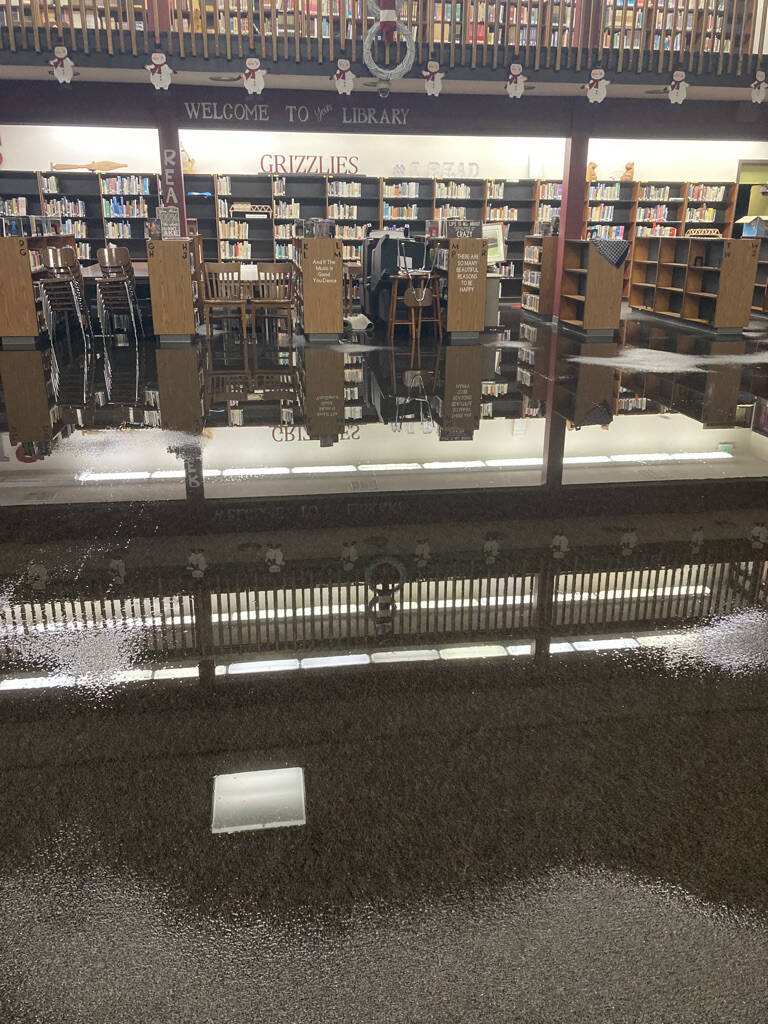Due to dropping enrollment, limited funding and aging buildings, Hoquiam School District is crafting a long-term plan that will likely involve downsizing the number of schools in the district.
The downsizing would allow the district to reallocate resources to much needed repairs to buildings around the district, according to Hoquiam Superintendent Mike Villarreal.
Since the start of the 2022-2023 school year, the district’s long-range facilities committee, architects, district administrators, school board members and union leadership have discussed potential configurations for a district with four buildings, rather than five, as is currently the case.
Following a series of February open houses where the public will have a chance to weigh in on downsizing, a stakeholder group will make a recommendation regarding the future of Hoquiam’s buildings to the school board, which will take a final vote on the matter in March or April.
Falling enrollment and steady square feet
Hoquiam’s need to downsize has much to do with a two decade-long decline in student enrollment.
About 1,600 students are enrolled at the district’s five operating schools. That number has dropped by nearly 25% since 2004, when about 2,130 students were enrolled.
The 50-year-old Hoquiam High School was built for a 1,000-student capacity, Villarreal said, but currently has only 450 students enrolled.
Villarreal said recent declines are partially due to the pandemic. From 2020 to 2021, enrollment dropped by about 150 students to 1,550. That timely trend, specifically, was bigger than Hoquiam alone — enrollment in k-12 public schools dropped by about 4% statewide from 2019 to 2021, according to data from the Office of the Superintendent of Public Instruction.
Enrollment, both in Hoquiam and the state, has rebounded slightly since then, but not to pre-pandemic levels. Larger economic factors could also be to blame, Villarreal said.
Fewer students in Hoquiam schools doesn’t just mean they have more room to run. The rub for the district: OSPI allocates monthly funding to school districts, called apportionment, based on how many students are enrolled. Apportionment funding goes to many different aspects of the district, but includes money for general maintenance, counselors and teachers.
For Hoquiam, apportionment makes up half of the district’s $30 million yearly revenue, according to Hoquiam School District Business Manager Keith Ounsted.
That means half of the district’s revenue, which is directly tied to the number of students in the district, has also declined.
What hasn’t declined is the amount of space the district owns, and the money it costs to keep it from falling apart.
The district owns six buildings, but only five are operational schools. Washington Elementary is being used for remote learning and by other outside agencies.
Total square footage of the five running schools sums to a little over 300,000. However, since the students in the district isn’t proportional to the large number of square feet, the district only receives enough OSPI funding to maintain just over half of the district’s total space, according to Villarreal.
The current plan to shrink that overall space is “kind of like when your parents decide to downsize when all the kids are gone,” Villarreal said.
“Because of the square footage and needs of each of these buildings, we don’t have enough money to do all the repairs in these buildings that need to be done.”
Needed repairs, limited funding
During a late-December cold snap, with students on winter break, an HVAC unit broke in the Hoquiam High School building, flooding the library floor with an inch of water. Damage to academic resources was minor, Villarreal said, but repairs cost the district $100,000.
Villarreal said there are 65 similarly precarious HVAC units across the district.
“It’s like having your old car, and the check engine light is glowing,” Villarreal said.
Roofing, electrical and plumbing are all immediate needs for Emerson, Central, middle and high schools, Villarreal said. The high school was built in 1966, the middle school in 1986, and Emerson and Central both date back to the 1950s.
“If we don’t do anything, our buildings are just going to fall apart and we won’t have any money to fix it,” Villarreal said.
Villarreal said the district has set aside some funds for maintenance, but currently has enough for only one roof repair. Needed funding could likely come from a variety of sources — including through the downsizing process, Villarreal said.
“We may have someone who may want to buy one of our buildings,” Villarreal said. “We could use that money to flip over into a remodel.”
Villarreal said he met with OSPI in January regarding Seismic Retrofitting Grants for School Buildings. He also discussed possible funding for a tsunami tower, he said.
The district will likely ask taxpayers for funding through a bond or levy at some point, Villarreal said, but that won’t happen until planning committees have identified what will be fixed. Those details will be compiled in a plan developed by the stakeholder group over the next several months.
The Hoquiam School District is hosting three open houses on Feb. 22, 23 and 28, each from 5 to 6 p.m. in the Hoquiam High School cafeteria and over Zoom. The district is seeking volunteers for the “HSD Right Size Team,” which will contribute to the facilities plan.
Contact reporter Clayton Franke at 406-552-3917 or clayton.franke@thedailyworld.com.


